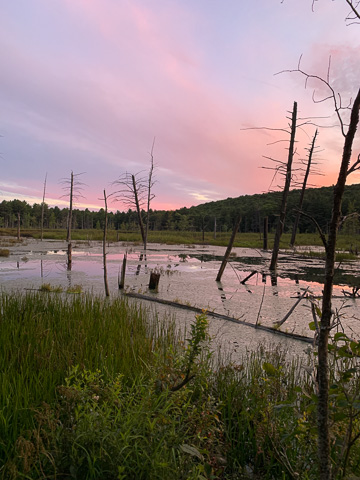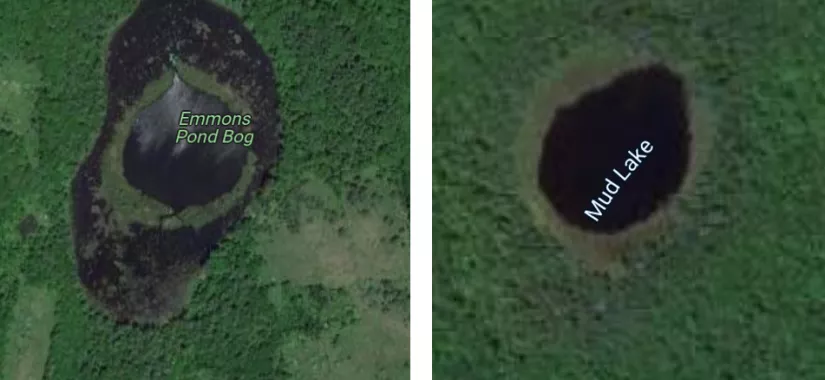
Emmon Pond Bog Overlook
Finally we get a good view of the Emmons Pond Bog! Do you see any animals from here? Can you see the circular matte in the middle of the pond?
Before the current beaver colony arrived in the area, the sphagnum moss mat extended from the pond's shore to the open-water center. But when the beavers built their dams, the water level rose and the original shoreline was pushed beyond the edge of the mat, deeper into the surrounding forest. The mat floats, so it wasn't covered by water. The edge of the mat ring represents the shoreline of the pond before the beavers arrived and started transforming the area. A few miles away, Mud Lake is an example of a kettle bog that still has its original form, the forest giving way to the moss mat, and the open water in the middle. There are active beavers there, too, which means Mud Lake might look like Emmons Pond in the near future.
Ask a Biologist: How did the bog form?
Donna Vogler: “A bog sort of ‘grows’ over time, so if you think of post-glaciation, the pond is this big bathtub, a round, open span of water with minimum vegetation on its perimeter. Mosses come from the surrounding forest and slowly grow towards the middle. The open water section shrinks as the floating mat expands. The bog mat is beautiful but also a little dangerous. A person could fall through and not find their way back up, and also the moss is easily damaged by foot traffic. Never walk on a bog alone and if there's a boardwalk installed, use that!"
Trail Note:
The next station is to the left down the short spur trail that takes you to the edge of the pond. After you explore that station, head back up to this marker and continue left on the main trail and on to the next marker.
